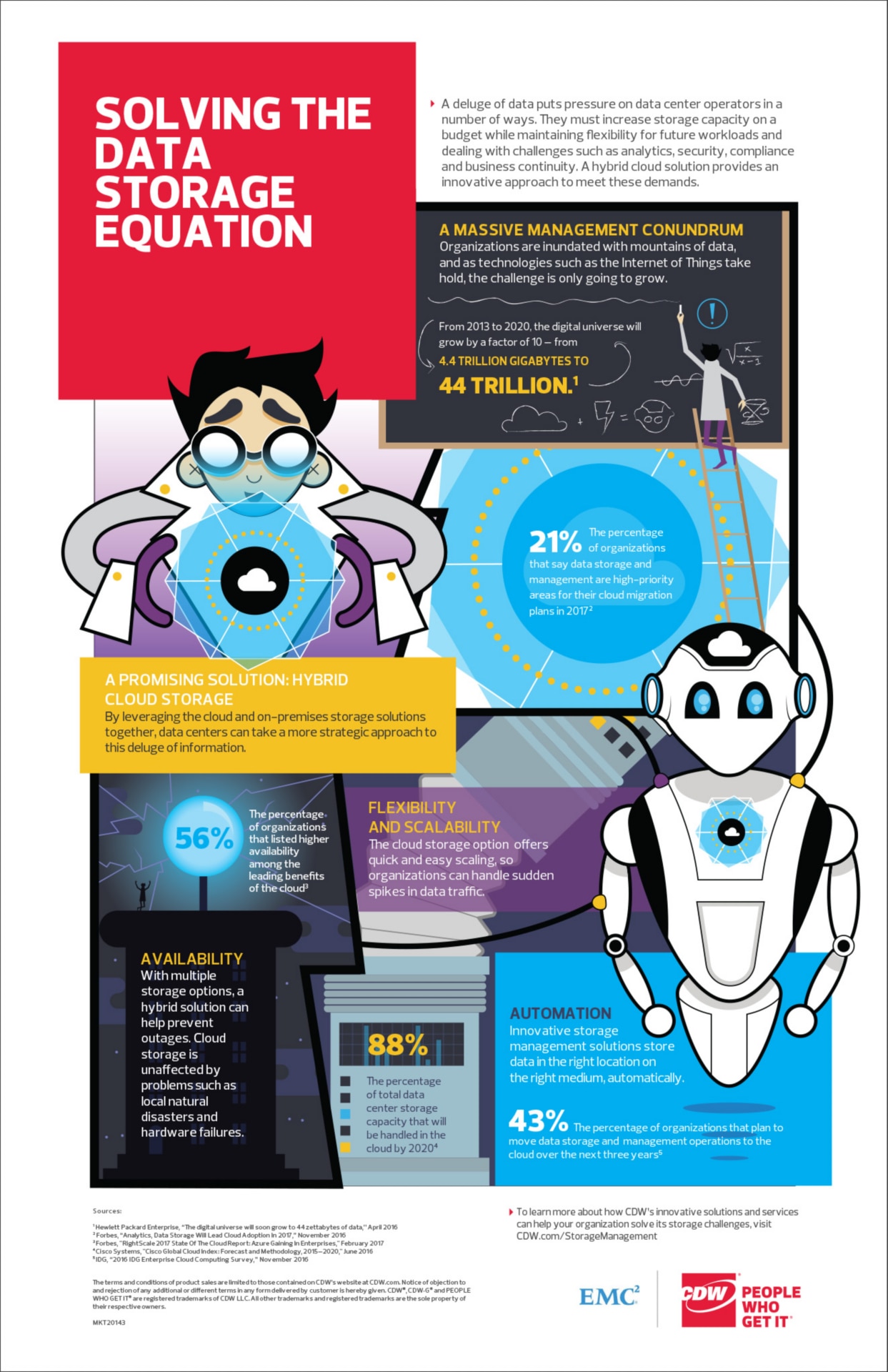An Inventive Approach to Solving Your Storage Problems
A hybrid cloud solution can increase storage capacity while maintaining flexibility to meet the demands of future workloads.
Data center operators face a major challenge. The amount of data they must store is growing rapidly, and applications that rely on this information to provide new capabilities – such as data analytics and the Internet of Things – require reliable, ready access to it.
Many organizations are implementing an innovative solution to this problem: hybrid cloud storage. By adding cloud services to their other storage components, such as flash arrays and hard-disc drives, data center operators address not only the challenges they have now, but also those they’ll face in the future.
Hybrid cloud storage provides the flexibility and scalability that data centers need for heavy workloads, while delivering optimum availability. Advanced storage management solutions take the burden off IT staff to make sure that data goes where it should.
Check out our infographic on how hybrid cloud solutions provide an innovative answer to your most challenging storage questions.
CDW's innovative solutions and services can help your organization solve its storage challenges.

You May Also Like
State-of-the-Arts Protection
Salt Lake Community College relies on APC's power and cooling technology to keep its Center for Arts and Media data center humming.
Why State and Local Agencies Should Consider IT Modernization
Citizens demand a responsive government that meets their needs. Updated solutions can help agencies meet this challenge.
The Cloud as a Storage Option
Hybrid cloud storage harnesses the benefits of both public and private clouds.
MKT20143